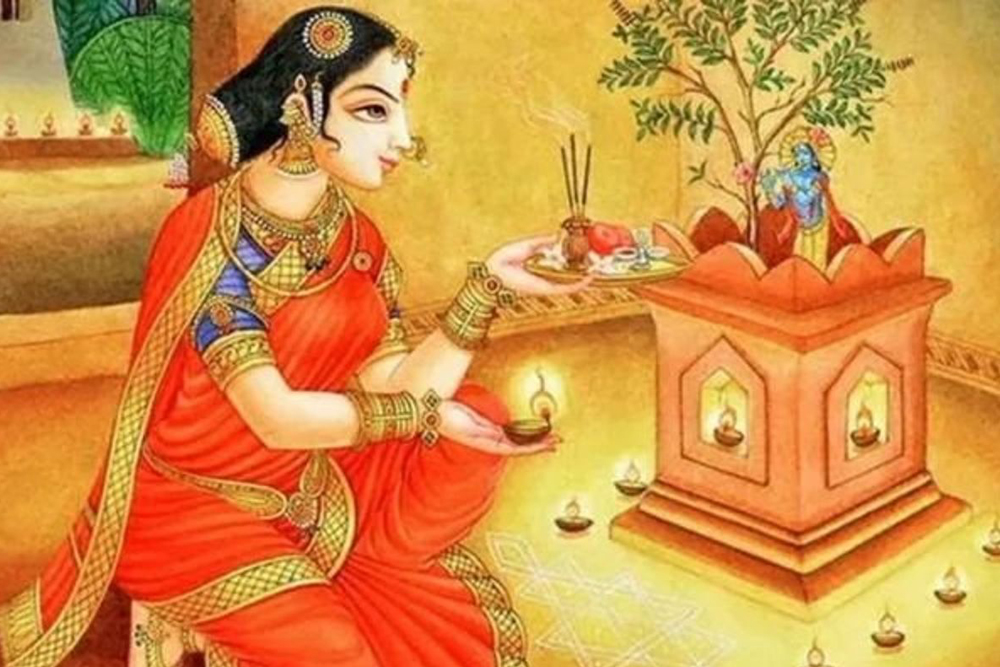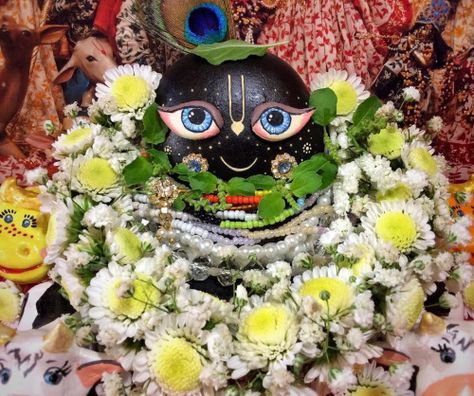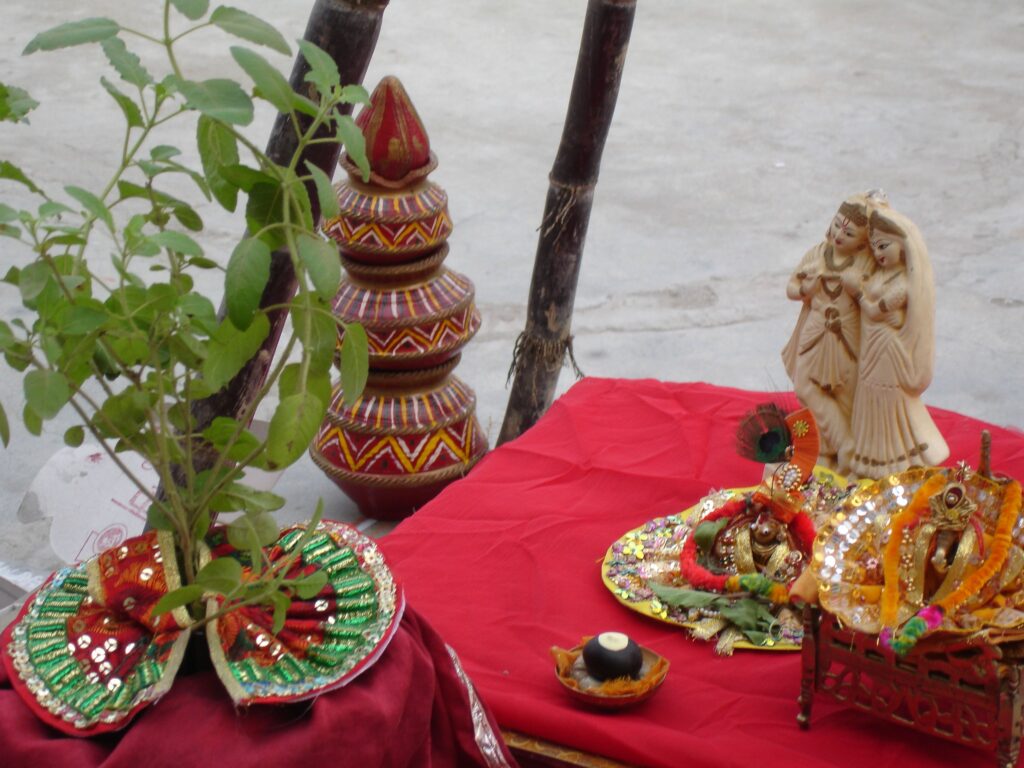Hindu mythology is rich with stories that have profound life lessons. The stories we encounter are more than just plain tales of gods and demons. They give us lessons that can shape our destiny and make us a better person. In the versatile collection of Hindu stories, there is a beautiful Tulsi and Krishna story.
This story stands out from others due to its depth and spiritual significance. In this article, we will explore the story of Lord Krishna and Tulsi. We will celebrate their connection and discuss the lessons that we can inculcate in our lives.

Tulsi and Krishna Story
Tulsi, known as Basil to the Western world, is not just an ordinary plant. It has immense religious significance in Hinduism, which is why the prefix holy is commonly used before Tusli. Tulsi is worshipped in Hindu temples and is referred to as a manifestation of the Goddess Lakshmi, the goddess of wealth.
The story of Vrinda, Vishnu and Jalandhar
The story of Tulsi begins with Vrinda. Vrinda was a stalwart woman who was a big devotee of Lord Vishnu. Vrinda had unwavering love and devotion for Lord Vishnu. She wished to unite with Lord Vishnu in a deep spiritual bond. However, she was destined for someone else.

A demon named Jalandhar fell in love with Vrinda. Initially, Vrinda tried to ignore Jalandhar, but his strong dedication and passion for her finally moved her heart. However, Jalandhar, a powerful demon, was unaware of her devotion to Vishnu.
The Curse of Jalandhar
Jalandhar was a powerful demon whose strength and power threatened the gods and the cosmic order. Vrinda’s loyalty to Vishnu was so intense that Jalandhar became invincible as long as he had her by his side. The gods, realizing the threat posed by Jalandhar, sought a way to weaken him. They fabricated a plan and sought the help of Lord Vishnu.
Lord Vishnu took the form of a handsome young man to win Vrinda’s heart. He approached Vrinda, enchanting her with his charm and grace.
Vrinda was unaware of his true identity. As the Maya of God unleashed, Vrinda momentarily forgot her loyalty to Jalandhar and touched Lord Vishnu’s feet.
Jalandhar, realizing his wife’s infidelity, got very furious. He confronted Vrinda, and in a state of rage, he cursed her to become a plant and be separated from him forever.

Vrinda became Tulsi, the basil plant. When Vrinda came to know that she was tricked by Lord Vishnu, in the moment of heat she cursed Lord Vishnu to become a stone.
Lord Vishnu acknowledged her curse and became Shaligram(a stone). Later, when Vrinda calmed down, she realized her mistake and asked Lord Vishnu to forgive her. Lord Vishnu granted her a boon: She would be worshipped along with him in temples.

Jalandhar was defeated by the gods without Vrinda’s support. It is said that when one worships the Tulsi plant, they worship the spirit of Vrinda, creating a deep spiritual connection with the divine.
The Divine Connection Between Krishna and Tulsi
Lord Krishna is Vishnu’s eighth avatar. His life is a play of love, compassion, and divine mischief. Krishna often interacts playfully with his devotees.
He recognized Tulsi’s importance and established her as one of his dearest devotees. In various texts, Tulsi is depicted as a sincere devotee, and Krishna, in all his glory, would often feel a connection with her spirit.
It is believed that Krishna’s favorite offerings included Tulsi leaves, which he cherished above everything else. Tulsi leaves are used in the prayers and rituals surrounding Krishna. In temples, Krishna idols are often adorned with garlands of Tulsi leaves.
Tulsi Vivah
A festival known as Tulsi Vivah revives the story of Krishna and Tulsi each year. It is a significant Hindu festival that celebrates the ceremonial marriage of the Tulsi plant (Basil) and Lord Vishnu.
Tulsi Vivah typically occurs on the Ekadashi (11th day) of the bright fortnight in the Hindu month of Kartika, which usually falls in November.

The festivities begin with the planting of the Tulsi plant in a pot or garden. On the day of the Vivah, elaborate rituals are performed.
The Tulsi plant is adorned with colorful clothing and jewelry. Rice, fruits, and sweets are offered at the base of the plant. A ceremonial canopy or mandap is often set up around the Tulsi plant to signify the wedding altar.
Devotees chant mantras and songs in praise of Tulsi and Lord Vishnu, invoking their blessings. A symbolic marriage ceremony is conducted, where a sacred thread is tied around the plant. Devotees perform aarti and offer prayers.
Read: Triyuginarayan temple story
Lessons from Tulsi and Krishna story
This story teaches us that God only sees devotion. It urges devotees to cultivate authentic love and passion in their everyday actions.
Just as Vrinda navigated and emerged from her life’s challenges, this story teaches that life’s adversities are often opportunities for growth and transformation.
Last but not least, the story highlights the importance of surrendering to the divine will. Krishna’s acceptance of Tulsi shows that surrendering to the sacred is never too late. It brings peace into our lives.





